© 2021 All Rights Reserved.
Godox
Comparison
Godox has a great range of speedlights. But which one is right for you?
I’m Wolf Amri (@wolf.amri), I’m a professional photographer, filmmaker and youtuber, and I created this page to help you decide which Godox flash or speedlight to buy. Feel free to ask questions down in the comments section to help me improve this page even more.
Table of Contents
Godox Speedlight Comparison
Godox probably has the biggest range of speedlights of any manufacturer. That gives you a lot of products to choose from, but it also complicates things when you want to compare their products.
While there are many comparison charts available for cameras and lenses, I found that hardly any site is comparing speedlights. So I sat down and checked their website for the specs of their products. As so often in the photography industry, these were sometimes confusing, but most of all incomplete. So I downloaded all the manuals and still couldn’t find the specs to compare all the Godox speedlights. A deep search through many web pages finally gave me everything I needed to create a Godox speedlight comparison chart.
Godox Speedlight Comparison Chart
From left to right is the order of my recommendation. The first two are obviously the flagships, but the third is really affordable. If you have the budget, and/or intend to use it professionally, get the furthest one on the left. Move to the right until you find one that meets your budget. But please check, if it also meets your needs. For example the 350 series are much smaller, but less powerful than the full sized speedlights.
Click on the row title, or scroll down below the chart for further explanation on every feature.
| Model | V1Pro | V860III | V1 | TT685II | V860II | TT685 | V850III | V850II | TT350 | V350 | TT600 |
|---|---|---|---|---|---|---|---|---|---|---|---|
| Image |
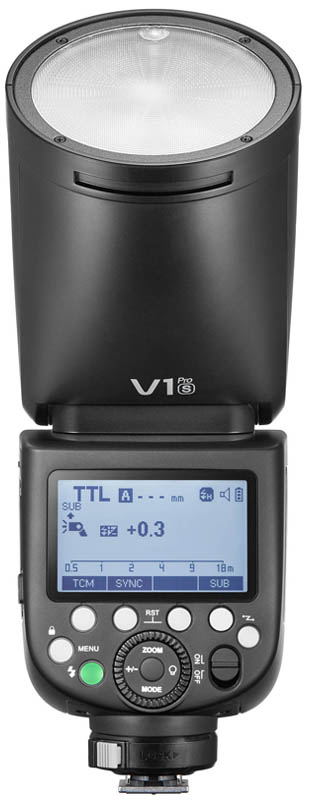
|
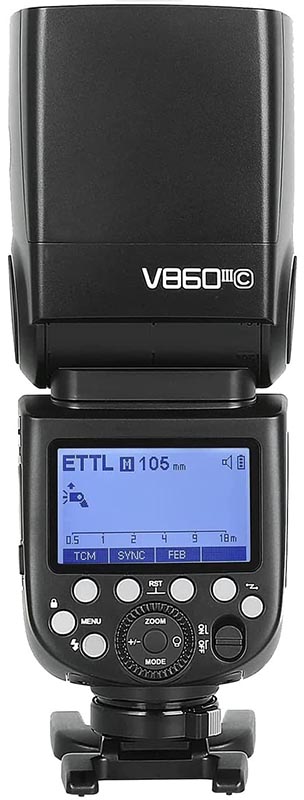
|
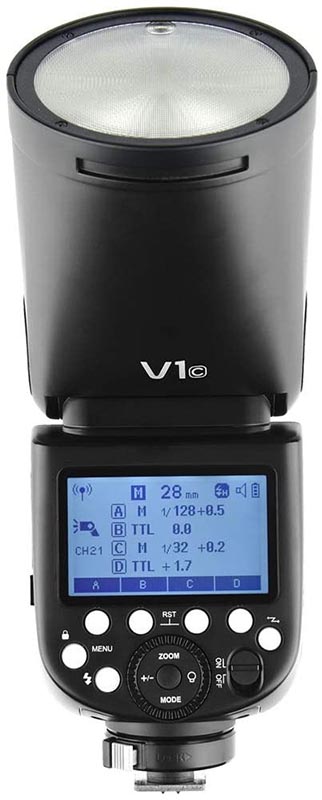
|
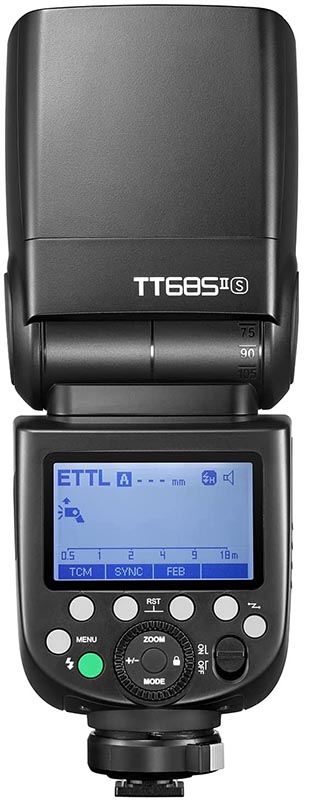
|
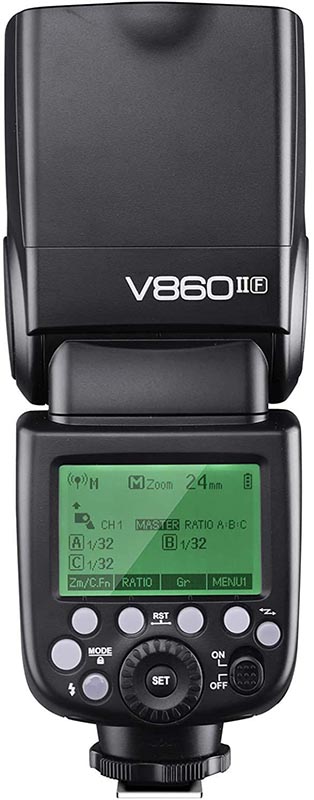
|
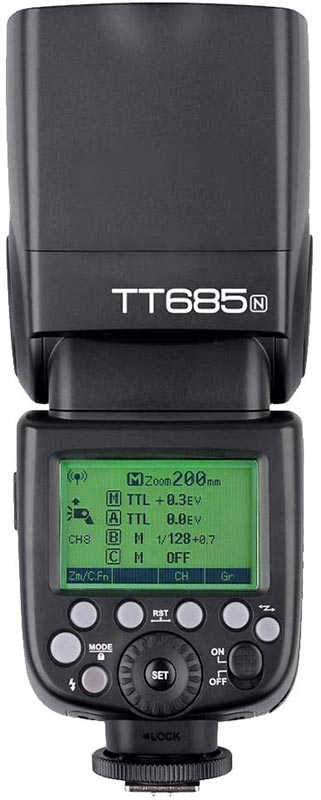
|
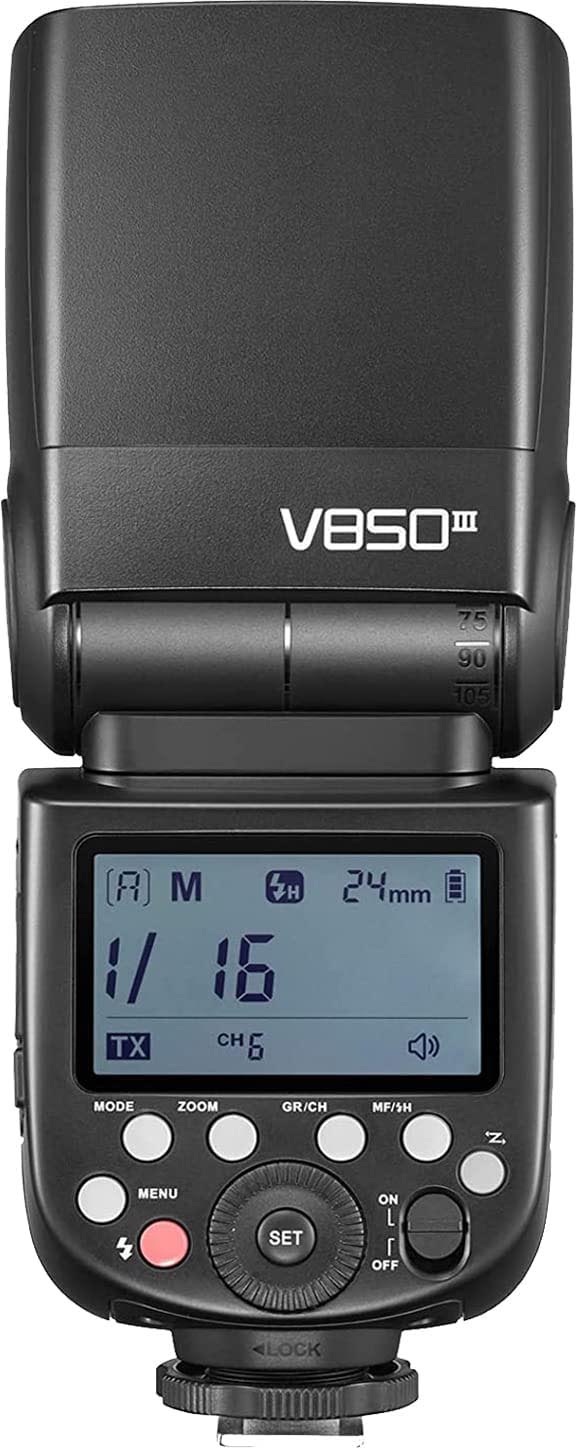
|
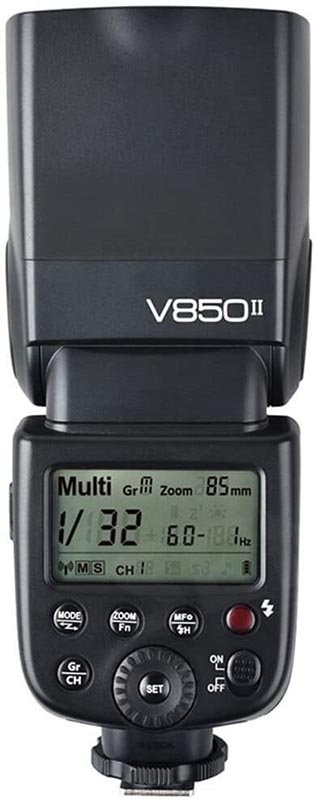
|
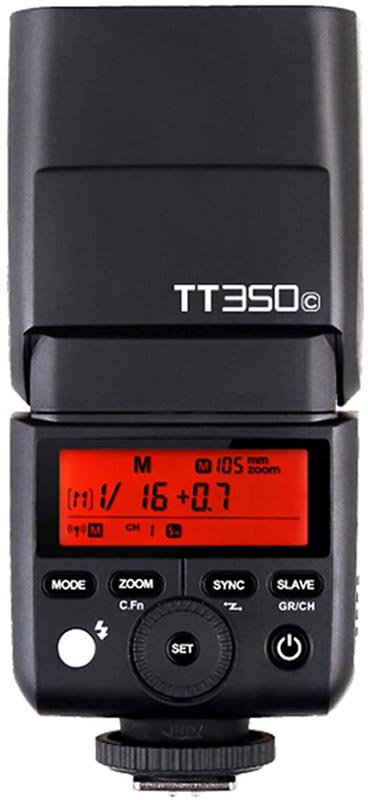
|
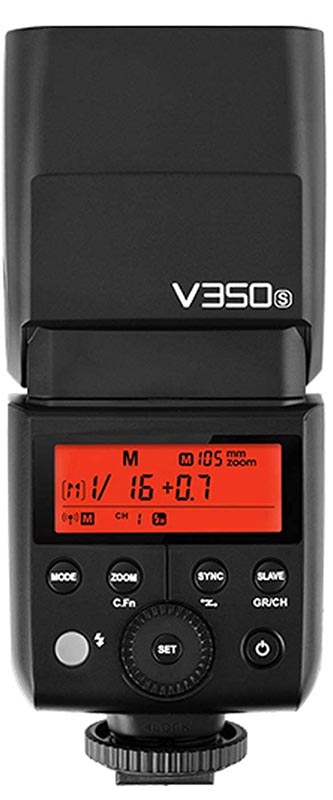
|
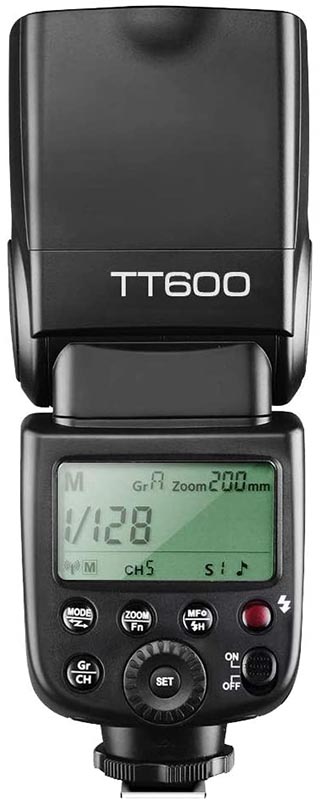
|
| Price | US$ 329.00 | US$ 195.00 | US$ 199.00 | US$ 129.00 | US$ 179.00 | US$ 110.00 | US$ 159.00 | US$ 139.00 | US$ 84.90 | US$ 159.00 | US$ 69.00 |
| Affiliate Link B&H | Buy From B&H | Buy From B&H | Buy From B&H | Buy From B&H | Buy From B&H | Buy From B&H | Buy From B&H | Buy From B&H | Buy From B&H | Buy From B&H | Buy From B&H |
| Affiliate Link Amazon | Buy From Amazon | Buy From Amazon | Buy From Amazon | Buy From Amazon | Buy From Amazon | Buy From Amazon | Buy From Amazon | Buy From Amazon | Buy From Amazon | Buy From Amazon | Buy From Amazon |
| MAIN FEATURES | |||||||||||
|
User Friendlyness (Menu Structure) |
very good | very good | very good | very good | medium | medium | no | no | no | no | no |
| Auto-Function (TTL) | yes | yes | yes | yes | yes | yes | no | no | yes | yes | no |
| Power Supply | Li-Ion | Li-Ion | Li-Ion | 4 x AA | Li-Ion | 4 x AA | Li-Ion | Li-Ion | 2 x AA | Li-Ion | 4 x AA |
| Size | full size | full size | full size | full size | full size | full size | full size | full size | half size | half size | full size |
| POWER SPECIFICATIONS | |||||||||||
| Power Output | 76Ws | 76Ws | 76Ws | 76Ws | 76Ws | 76Ws | 76Ws | 76Ws | n/a | n/a | 76Ws |
|
Guide Number (in m @ISO100) |
n/a | 60m | n/a | 60m | 60m | 60m | 60m | 60m | 36m | 36m | 60m |
|
Guide Number (in ft @ISO100) |
n/a | 197ft | n/a | 197ft | 197ft | 197ft | 197ft | 197ft | 118ft | 118ft | 197ft |
| Recycle Time max. | 1.5sec | 1.5sec | 1.5sec | 2.6sec | 1.5sec | 2.6sec | 1.5sec | 1.5sec | 2.2sec | 1.7sec | 2.6sec |
| Recycle Time min. | ≈ 0sec | ≈ 0sec | ≈ 0sec | 0.1sec | ≈ 0sec | 0.1sec | ≈ 0sec | ≈ 0sec | 0.1sec | 0.1sec | 0.1sec |
| Min. Power Setting | 1/256 | 1/256 | 1/256 | 1/256 | 1/128 | 1/128 | 1/128 | 1/128 | 1/128 | 1/128 | 1/128 |
|
Battery Capacity (Nr. of Full Power Flashes) |
500 | 480 | 480 | 330 | 650 |
230 (with Ni-MH) |
450 | 650 |
210 (with Ni-MH) |
500 |
230 (with Ni-MH) |
| Battery Level Indicator | yes | yes | yes | no (TBC) | yes | yes | yes | yes | yes | yes | yes |
|
External Power Pack Compatibility |
yes | no | no | yes | no | yes | no | no | no | no | no |
| FLASH MODES | |||||||||||
| TTL |
E-TTL II (or equivalent) |
E-TTL II (or equivalent) |
E-TTL II (or equivalent) |
E-TTL II (or equivalent) |
E-TTL II (or equivalent) |
E-TTL II (or equivalent) |
manual only | manual only |
E-TTL II (or equivalent) |
E-TTL II (or equivalent) |
manual only |
|
TCM (TTL to Manual Conversion) |
yes | yes | yes | yes | no | no | no | no | no | no | no |
|
HSS (High Speed Sync) |
yes | yes | yes | yes | yes | yes | yes | yes | yes | yes | yes |
| Rear Curtain Sync | yes | yes | yes | yes | yes | yes | yes | yes | yes | yes | no |
|
Multi (Stroboscopic Flash) |
yes | yes | yes | yes | yes | yes | yes | yes | yes | yes | yes |
|
FEC (Flash Exposure Compensation) |
+/- 3 | +/- 3 | +/- 3 | +/- 3 | +/- 3 | +/- 3 | no | no | +/- 3 | +/- 3 | no |
|
FEB (Flash Exposure Bracketing) |
yes | yes | yes | yes | yes | yes | no | no | yes | yes | no |
| WIRELESS | TRIGGERING | |||||||||||
| Wireless Triggering | yes / X-System | yes / X-System | yes / X-System | yes / X-System | yes / X-System | yes / X-System | yes / X-System | yes / X-System | yes / X-System | yes / X-System | yes / X-System |
|
Use Speedlight as Transmitter |
yes | yes | yes | yes | yes | yes | yes | yes | yes | yes | yes |
| Groups | 4 | 4 | 4 | 4 | 3 | 3 | 4 | 4 | 3 | 3 | 5 |
| Channels | 32 | 32 | 32 | 32 | 32 | 32 | 32 | 32 | 16 | 16 | 32 |
| ID | 99 | 99 | 99 | 99 | no | no | 99 | no | no | no | no |
| Optical Slave | yes | yes | yes | yes | yes | yes | yes | yes | yes | yes | yes |
| Sync Cord | 2.5mm | 2.5mm | 2.5mm | 2.5mm | 2.5mm | 3.5mm | 2.5mm | 2.5mm | no | no | 3.5mm |
| FLASH DURATION | LIGHT DISTRIBUTION | MODELLING LIGHT | |||||||||||
|
Flash Duration min. (Low Power Setting) |
1/20.000sec | 1/20.000sec | 1/20.000sec | 1/20.000sec | 1/20.000sec | 1/20.000sec | 1/20.000sec | 1/20.000sec | 1/20.000sec | 1/20.000sec | 1/20.000sec |
|
Flash Duration max. (High Power Setting) |
1/300sec | 1/300sec | 1/300sec | 1/300sec | 1/300sec | 1/300sec | 1/300sec | 1/300sec | 1/350sec | 1/350sec | 1/300sec |
| Zoom min. | 28mm | 20mm | 28mm | 20mm | 20mm | 20mm | 20mm | 20mm | 24mm | 24mm | 20mm |
| Zoom max. | 105mm | 200mm | 105mm | 200mm | 200mm | 200mm | 200mm | 200mm | 105mm | 105mm | 200mm |
| Built-in Bounce Card |
no (tool needed) |
yes |
no (tool needed) |
yes | yes | yes | yes | yes | yes | yes | yes |
| LED Modeling Lamp | 2W | 2W | 2W | no | no | no | no | no | no | no | no |
| WEIGHT AND DIMENSIONS | |||||||||||
| Weight excl. Batteries | 460g | 410g | 420g | 405g | 430g | 410g | 390g | 400g | 200g | 210g | 400g |
| Weight incl. Batteries | 580g | 530g | 530g | 530g | 540g | 530g | 500g | 500g | 250g | 290g | 500g |
|
Dimensions (W x H x D) |
TBA | 59 x 76 x 195mm | 76 x 93 x 197mm | 64 x 76 x 190mm | 64 x 76 x 190mm | 64 x 76 x 190mm | 60 x 70.5 x 199mm | 64 x 76 x 190mm | 38 x 62 x 140 mm | 38 x 62 x 150 mm | 64 x 76 x 190mm |
| MISCELLANEOUS | |||||||||||
|
USB (Firmware Updatable Windows Only) |
C | C | C | C | micro | micro | no | no | micro | micro | no |
| AF-Assist Beam | yes | yes | yes | yes | yes | yes | yes | yes | yes | yes | yes |
Please use my affiliate links once you've decided which speedlight to get
You have probably realized, that this page is ad-free. I genuinely like to help people, but creating this page and all my other tools costs time – and time is money. If you feel they are helpful, please consider buying from the affiliate links I provide. Doesn’t cost you anything extra, but helps me create more and perhaps even better stuff in the future.
Most of them are amazon-links. To help me you don’t even have to buy photography related stuff. Click this amazon link now and buy whatever you need to get me a small commission.
Comparing The Godox TT685II
to the Godox V1
I have created a video that not only compares the new affordable Godox TT685II to the Godox V1, but also explains what to look out for when buying a new speedlight.
The 4 Main Features
In my Godox Speedlight Comparison Chart above I have listed 40 features. But in fact there are only 4 features that will set the products apart and mainly influence your buying decision – well, except for the price.
1. User Friendlyness
Godox has greatly improved the user friendlyness of their speedlights over the years. Their latest clearly worded menu system and button structure is amazingly streamlined, tidy and easy to use. But that only applies to their latest series (III-series (except for the V850III) and the V1). With older speedlights, there is sometimes an Fn Button adjusting some settings will require you to go into a custom function menu that will show up as glyphs that are nowhere near self-explanatory, particularly for beginners.
So while you just have to browse through the menu in the newer versions to find the setting you want to change, you actually have to learn the menu structure by heart with the older systems. If you don’t use these regularly you will forget them and have to check the user manual every time. While that’s pretty annoying, it is not limited to Godox products, but a general sign of the times.
A good structured menu is key for ease of use and being fast on location. So for me this is probably the No1 feature in a speedlight.
2. Auto vs Manual (TTL or not)
TTL, or to be exact ETTL-II is an auto-function. When setting that instead of manual flash setting, the flash will “try” to set the flash power for you. Sounds like a dream-come-true, but unfortunately to work properly, your image has to meet certain conditions, like for example the main subject has to cover min. 1/3 of the frame.
Also unfortunately is, that it is not as easy to distinguish whether a Godox Speedlight supports TTL, as it is to find out whether it is Li-Ion powered or not (V vs TT). For example the V860III has TTL, while the V850III doesn’t. So there is no clear identifier in the name of the flash, which would be convenient. However, in the chart below I have listed that on top as one of the most important features, particularly for beginners.
3. AA vs Li-Ion (TT vs V-series)
When comparing speedlights, or flash in general, the power supply is a major factor. Godox speedlights have a clear naming for that.
- The V-series (v stands for “ving”) is powered by Li-Ion batteries
- The TT series is powered by AA batteries – some speedlights of this series allow to use their Li-Ion PB960 external battery pack. That pack considerably reduces the recycle time.
Advantages of Li-Ion
-
Faster Recycle Times
-
More Flashes per Battery
-
Cheaper in the Long-run
good
Disadvantages of Li-Ion
-
More Expensive at Initial Purchase
-
Battery Management Needed
-
Safety Measures Recommended
bad
Advantages of Li-Ion batteries:
- Faster recycle times
The higher voltage of Li-Ion batteries allows the flash to faster recycle after it fired. Particularly when firing at full power, this is significant, because waiting a second longer in a situation like a wedding where you want to shoot many consecutive frames at the most important moments feels like an eternity. However, usually you wouldn’t shoot at full power, but recycle times are considerably faster at lower power settings. - More flashes per battery
Li-Ion batteries have a higher capacity and will therefore let you shoot more frames with flash than AA batteries. That’s not a big advantage though because you can always carry tons of spare batteries and swapping the battery doesn’t take long. - Cheaper in the long-run
Particularly if you use it a lot, constantly buying AA batteries is quite an expense. An alternative are NiMh rechargables. Godox recommends Eneloop, and I couldn’t agree more.
Disadvantages of Li-Ion batteries:
- More expensive at initial purchase
As you can see in the chart below, Li-Ion battery powered speedlights come at a higher price point. - Battery management needed
I would recommend at least one spare battery, plus: you always need to plan ahead and make sure they are charged before you head out for a shoot. - Safety measures recommended
4. Size and Power
The fourth distinctive feature is the size of the speedlight and with it its power. While you would assume that with so many different options available, there have to be many different sizes and power output levels, there are in fact only two. The two small 350 series speedlights vs all the rest that share the same power output and roughly size. In my Godox speedlight comparison chart below, I have named it full and half size.
Comparing all Features of Godox Speedlights
1. Power Specifications
1.1 Power Output:
The higher the power output, the brighter the speedlight. Usually speedlights don’t show the power output, but rather the guide number (explained below). For most Godox Speedlights, (except for the two smaller ones) the power output is the same.
1.2 Guide Number (in m or ft)
That is a difficult one. While the guide number is a more common measure for speedlights than the power output, it is almost impossible to use it to compare different speedlights. The guide number basically tells you how far a subject can be away from the flash (in m or ft) and still get well lit at the maximum power setting, at a certain f-number (aperture).
But: the guide number is not a measure you can easily compare for several reasons
- The zoom setting of the speedlight plays a massive role in how concentrated the light arrives at your subject.
The Godox V1 only has a max. zoom setting of 105mm, meaning it can not bundle the light as good as the even the cheapo Godox TT600 with a max. zoom setting of 200mm despite having the same power output of 76Ws.
That’s probably why Godox doesn’t list the guide number for the V1 at all.
And when comparing it to other brands, not every brand has the same max. zoom setting either. - The f-number (aperture) for which the guide number is calculated is often not listed. So some might calculate it for f/2, others for f/4 – the difference would be massive.
- Same goes for ISO. Most use ISO100 to calculate the guide number, others use ISO200
- Also be aware that some list it in m only and others in ft only
So the guide number alone literally tells you nothing at all unless you compare different speedlights with the exact same specs.


1.3. Recycle Time (max. and min.)
The time it takes the flash/speedlight to be ready for the next shot, after you shot an image at full flash power. Li-Ion batteries have a higher voltage and will therefore deliver the energy needed to recycle quicker.
That is definitely an issue when you want to photograph many consecutive frames for a shooting, particularly at full power. At a lower power setting, that is becoming less of an issue. That’s why Godox lists:
- the max. time it takes to recycle after a flash at full power
- the min. time it takes to recycle after a flash at the lowest power
1.4 Min. Power Setting
This spec might sound totally unimportant at first sight, but it isn’t. Being able to set 1/256 instead of 1/128 in manual flash mode means, that you can lower the light output even more when needed. For shootings in very low light, with a very wide aperture, you might still dramatically raise ISO to get a lot of ambient light. In rare cases, 1/128 might still over expose your shot. 1/256 on the other hand will just output half as much power and get you a good exposure.
But: a workaround to that is using TTL if the flash supports that. This automatic function of your flash allows for even lower power output than 1/256. TTL just gives you a bit less control over the exposure than manual flash would.
1.5 Battery Capacity
For many, the battery capacity is a big deal when comparing speedlights. Personally I don’t care – I just carry enough spare batteries of whatever kind and change them when needed.
1.6 Battery Level Indicator
Sounds like a no-brainer, but I realized that their Godox’ new TT685II doesn’t have a battery level indicator. Particularly when using AA batteries, you want to know the levels because you want to change in time in case there is an important scenario coming up (wedding).
1.7 External Power Pack Compatibility
Some Godox’ Speedlights are compatible with their Li-Ion PB960 external battery pack. That will allow even faster recycle times than the built-in Li-Ion batteries and also have a higher capacity. Obviously it is heavier and more cumbersome to carry around.
2. Flash Modes
2.1 TTL:
TTL is the equivalent to your automatic mode in-camera. It tries to measure the flashlight reflected from your subject and cut the power as soon as it is well exposed.
Just like with exposure in-camera, there are certain conditions that need to be met. A person wearing a white shirt in front of a black background may easily trick this automatic function and over expose the person.
However, it is a great tool when getting into flash photography, or particularly when things change a lot, like your distance to the subjects.
Many manufacturers have their own TTL-Protocol (E-TTL II for Canon, i-TTL for Nikon), but Godox supports all of them.
2.2 TCM:
TCM stands for “TTL converted to Manual”. This function is pretty amazing for quick off-camera-flash. You basically shoot an image in TTL, and then tell the flash to set the needed power it measured as manual setting.
The big bonus is: since the distance flash-subject won’t move, you can get really close to take a shot of the face only (if it is a portrait), then you store that setting and can go wherever you want. I’m preparing a video on my youtube channel to explain why that is extremely helpful.
2.3 HSS High Speed Sync:
Another difficult one: every camera has a max. sync speed. That is the fastest shutter speed your camera will let you choose when using flash/speedlight. With some third party flashes you can still set a higher shutter speed, because the camera will not recognize that there is a flash, but you will get a dark bar on the top or bottom of your frame.
Reason being is, that the shutter curtain starts to close while the flash is still firing, and you are basically photographing the shutter curtain.
Reason being is, that the shutter curtain starts to close while the flash is still firing, and you are basically photographing the shutter curtain.
HSS doesn’t fire a single burst, but a series of smaller bursts, avoiding that issue. All Godox speedlights support that function, but not all studio flashes do.
Reason being is, that you will mainly use HSS outdoors because indoors you usually won’t need fast shutter speeds. More on that, soon on my youtube channel.
2.4 Rear Curtain Sync
Imagine a subject (e.g. a car) moving in a certain direction while you use a slow shutter speed. The car would create a blurred light trail.
Now consider adding a flash. If it fires when the shutter opens, there will be a bright, sharp car in the beginning, frozen by the flash, and then the same light trail we had before. That looks a bit unnatural. Think about the comics of your youth. If something is supposed to look fast, the trail would be behind it, rather than in front. So you would want the sharp car in front, and the light trail in the back.
This is what you can achieve with firing the flash when the shutter closes (at the rear curtain of the exposure).
2.5 Multi (Stroboscopic Flash):
Have a look at this image. Imagine a person moving in a very dark surrounding. You choose an exposure time of 1sec and fire the flash every 1/10sec. What you will get is 10 different poses of the person. That is what Multi mode does. You can choose the frequency and the number of flashes to get the output you are looking for.
2.6 FEC (Flash Exposure Compensation)
When using the automatic mode TTL, the flash/speedlight may over- or underexpose your subject depending on the conditions. In these cases you can tell the flash to compensate in either direction in steps of 1/3 to get the desired brightness.
2.7 FEB (Flash Exposure Bracketing)
Similar to shooting bracketed exposures on your camera when you don’t use flash, you could do the same with flash. So shoot a series of images with different flash power output. That way you can make sure you have one shot that is perfectly well lit. It’s not a function that is used often and while Godox supports it, it depends on the camera whether you can actually use it.
3. Wireless | Triggering
3.1 Wireless System
When you want to use your flash off camera, Godox Speedlights are compatible with Godox own X-System. There are several triggers to choose from, but they would fire all Godox Speedlights and all Godox Flashes. That is a big bonus that speaks for Godox.
3.2 Use Speedlight as Transmitter
If you want to use multiple off-camera flashes, you need a way to control the others. All the products in this Godox speedlight comparison will not only work as a receiver, but also as a trigger/transmitter to control the other Godox devices.
3.3 Groups
When using multiple off-camera flashes or speedlights, you can control them individually by assigning them to a group. More groups mean you can control more flashes individually. But of course you can also combine multiple flashes into one group.
For example you want to change the power of your main light, but keep the others at the same power setting. If the main light has its own group, you can easily do that on your speedlight.
3.4 Channels
By selecting different wireless channels, you can make sure to get one that has the least amount of interference with anything else. That also helps in case another photographer is nearby and also shooting with Godox.
3.5 ID
Choosing an ID will prevent interference with other photographers who shoot in the same area – similar to Channels, it gives you even more options to make sure that you don’t trigger each others flashes/speedlights.
3.6 Optical Slave
Godox Flashes and speedlights have an optical sensor that detects changes in brightness. That is helpful in case you want to shoot with flashes from different brands that wouldn’t work together with a regular wireless system. So as soon as one flash fires, the other one detects the change in brightness and would fire too.
There are two settings for that: S1 is used when the trigger flash is using manual settings – it will immediately fire when it detects a change in brightness . S2 will ignore the pre-flash and only fire at the second flash (used when the trigger flash uses TTL that will fire a pre-flash to detect the correct flash exposure).
3.7 Sync cord
Alternatively to wireless triggering, some cameras would let you trigger a flash with a sync cord. Most speedlights support one of two different plug sizes 2.5mm or 3.5 mm.
4. Flash Duration | Light Distribution | Modeling Light
4.1 Flash Duration min. (Low Power Setting)
The flash duration is very important when freezing motion. In a dark environment (studio), the motion can be frozen by the flash firing only very very shortly, rather than by a fast shutter speed.
At the lowest power setting of the speedlight/flash, the flash duration can be very short – much shorter than the fastest shutter speed. You can use that for example for shooting water drops, or people jumping. How good that works depends on the flash/speedlight. For example Godox’ Speedlights all have a flash duration of around 1/20.000sec at the min. power setting. Compare that to 1/4.000sec fastest shutter speed of most entry-level cameras.
4.2 Flash Duration max. (High Power Setting)
Check the info about flash duration above.
At the highest power setting, the flash duration is much longer, making it close to impossible to freeze the motion. Bigger battery powered flash guns (like Godox’ Wistro series) are usually better in this regard than mains powered flash guns or speedlights.
4.3 Zoom (min. & max.):
Speedlights will often let you zoom the light (or focus if you will). The more you zoom it, the smaller the area that will be lit, but the higher the light output will become.
If you are shooting something in a distance, with a 200mm lens, the speedlight will usually automatically adjust the zoom. But you can manually overrule that.
On the other hand if you want to photograph a group of people and use a wide-angle, you want the light to be spread across a much wider area. That wider spread on the other hand reduces the flash power per area.
The numbers in the Godox Comparison Chart above are without any aids. The Godox AK-R1 Accessory Kit contains tools that will give you an even wider spread.
4.4 Built-in Bounce Card
A very popular method to get a softer and more even light is to bounce the flash (e.g. against the ceiling). However, to get some additional highlights, most speedlights have a built-in card that would let you bounce a part of the light towards your subject while the rest is led against the ceiling.
An exception for that is the Godox V1 due to its round head. The bounce card is not built-in, but you rather need to purchase the Godox AK-R1 Accessory Kit and use the magnetic holder along with the bounce tool. The downside of that is: it is more expensive and adds some additional bulkyness.
4.5 LED Modelling Lamp
Very few speedlights, but most dedicated flashes have a built-in modelling light that will help you get an idea of how the light will look light (mainly in a dark surrounding because the light isn’t extremely powerful).
Other than for dedicated flash, the modelling lamp on a speedlight won’t show you the character of the light because the LED is very small and would not sit exactly where the light of the flash bulb is.
5. Miscellaneous
5.1 USB (Firmware Updatable)
Some of Godox’ Speedlights will let you update the firmware. Please note: at the time of the writing, you will need a windows computer to update the firmware.
5.2 AF-Assist Beam
All Godox Speedlights in this comparison table have a built-in AF-Assist Beam, that will make focussing in dark areas much easier. For Flash you could use the modelling light instead.
Godox Speedlight Comparison FAQ
While I hope I answered all your questions in the above Godox Speedlight Comparison Chart, don’t hesitate if there are still some uncertainties. Ask away in the comments below. I’ll happily answer them and include the most frequently asked questions in the FAQ.
If you look at my Godox Speedlight Comparison Chart above, I have sorted it in a way that the Speedlight on the left is the one I’d recommend most, and the one on the right is the one I’d recommend least.
That is if they all meet your budget. If your budget is limited, get the one furthest on the left you can afford.
The numbers for recycle times and battery capacity in my Godox Speedlight Comparison Chart above are from multiple sources I found online. They used the recommendation from Godox, which are rechargeable Eneloop batteries. With regular batteries you may get slightly better values. But I’d still recommend the Eneloops. I have used them for years and they never failed me.
Please comment below. I will constantly update this section with new questions.
22 Responses
Hi great job ,-) Thank you.
I do real estate photography, and I used a Canon 600EX-RT, but it became incompatible because I now use the Fujifilm GFX50R. I keep 8 eneloop batteries in good condition and a charger.
Do you think I’m well served with the TT685II? Or even two if I need more light for the price of a more expensive one with more expensive batteries, but with equal performance and functions?
I could take advantage of the Eneloop batteries .-) and continue working.
A flash from my camera’s brand, as usual, is much more expensive; enough for two of these Godox and the Xpro transmitter.
Please send me your opinion before placing my order.
It seems to me that this TT685II, at the moment has a good value and maybe it’s the sweet spot of the best in your table?! do you agree?
Thank you very much.
Compliments.
Hi Luís! Very sorry for the delay. You’ve been the first to comment on this page and I missed the email. You probably ordered already. The TT685II is awesome value for money. I don’t know whether you saw my video comparison between the TT685II and the V1: https://www.youtube.com/watch?v=EcMTP3f44jY
For real estate, the TT should be totally fine because you don’t need fast recycle times, which would be the main advantage of the V series. All of them are really worth their money though.
Why do you list 4 groups when most have 5 (A-E). Am I missing something?
Thank you, Skip. Good point. That’s master groups vs slave groups. I might have to add another row there.
Thanks for this resource!! I notice that the V860II says no TCM, but several YT videos that I’ve seen speak of it as having TCM. Does it really not have TCM?
Hey Ryan! Sorry, I missed your question. I don’t own the V860II, but I read the manual for all the speedlights and I just double checked again. It’s not in the manual. Theoretically there could have been a firmware upgrade that made it possible, but from the videos I saw that really show the display, I can’t see the TCM function button. If you see it displayed on the menu of someones video, please tell me the source and I’ll immediately correct that. I want the chart to be as accurate as possible.
Thanks again!
A very informative video. Thank you! I wanted to buy another “toy” for my Godox set, I found your site as I couldn’t choose between TT685II and V860II, and it turned out that the speedlight for my needs is V1. 🙂 BTW, when comparing prices, one should include at least one set of AA batteries for TT speedlights. The TCM function may save you a few seconds, but it works only with Godox XPro transmitters.
Thank you for your feedback, Pawel. I totally agree regarding the batteries. The TCM function works on my V1 without transmitter. Do you mean it doesn’t work if I use the V1 as a transmitter?
Don’t forget that even though they typically last 3 times longer than AA batteries, the Li-Ion rechargeable batteries still may run out of power and hence you might feel the need for a backup rechargeable battery too !!
Absolutely! Thanks for your feedback! I’ll try to improve the text in this regard.
I use flash primarily in full sunlight to fill shadows. So 1/4000 f2.8 or. 1/2000 f4 – would be great to see a video talking about HSS in full sunlight and what distances to expect from the various Godox systems using wireless X Pro
Thanks for the suggestion, Quin. And for your feedback. And sorry for the delay. The notification email settings weren’t correct, so I didn’t get your message. Such a video is long on my list. I even want to try to make kind of a table or app that would help with lighting ratios so that you don’t have to use light meters (that are cumbersome to work with outdoors).
Greetings,
Enjoying videos and Godox comparison chart. Clicked on link: https://amzn.to/3zqGKSC to buy flash get item not available. Search Amazon item available from other sites. Don’t know all ins & outs of your links but figured to let you know.
Regards,
John
Hi John,
thanks a lot for your feedback and info. I’ll try to update the links. It’s a bit tough because they often change and amazon doesn’t let me pick “sold by amazon” only, as it did in the past.
Your ‘Power Output’ row is displaying units of energy (joules), not power (watts). Power output is energy divided by time. Design and quality of components are far more likely to have greater influence on power output than the amount of energy stored within a system; which guarantees little and in this instance could well be considered at best meaningless, or possibly worse if thought of as consumer manipulation. You do not have to look far to encounter a 500Ws monolight outperforming a 600Ws monolight, albeit at three times the price.
Thank you for your feedback, Jock. I’m very happy to improve the chart by making experiments. But I only own two of these units and so I have to rely on the information that is available. The goal of this website is to combine and display all the information that is out there (and partly really hard to find) to be able to compare the available godox speedlights.
If you have any tip on how I could improve this, I’d be more than happy. Skipping this row all together wouldn’t help I guess.
Mr. Amri,
Thank you for this excellent comparison. Maybe you could mention that using X2T increases the usability of the low cost TT600 model. For me X2T is extremely useful.
Best regards,
Guido
Thank you, Guido. You are absolutely correct. The transmitter makes them even more useful and great value for money.
What a great resource this is. I have both a TT600 and a TT685 Speedlight and a X2T trigger. I also have a couple of Godox studio strobes. It’s really great that the X2T works with all of these Godox products. If I get another speedlight, based on your table, it will definitely be the TT685II.
Hi Dick! Sorry, seems I completely missed your comment. Thanks for visiting 😉
Is the tt 685ii compatible with the nikon d850?
Hi Bruce. Yes the TT685II is compatible, if you get the Nikon version. Godox has mounts for every major brand.